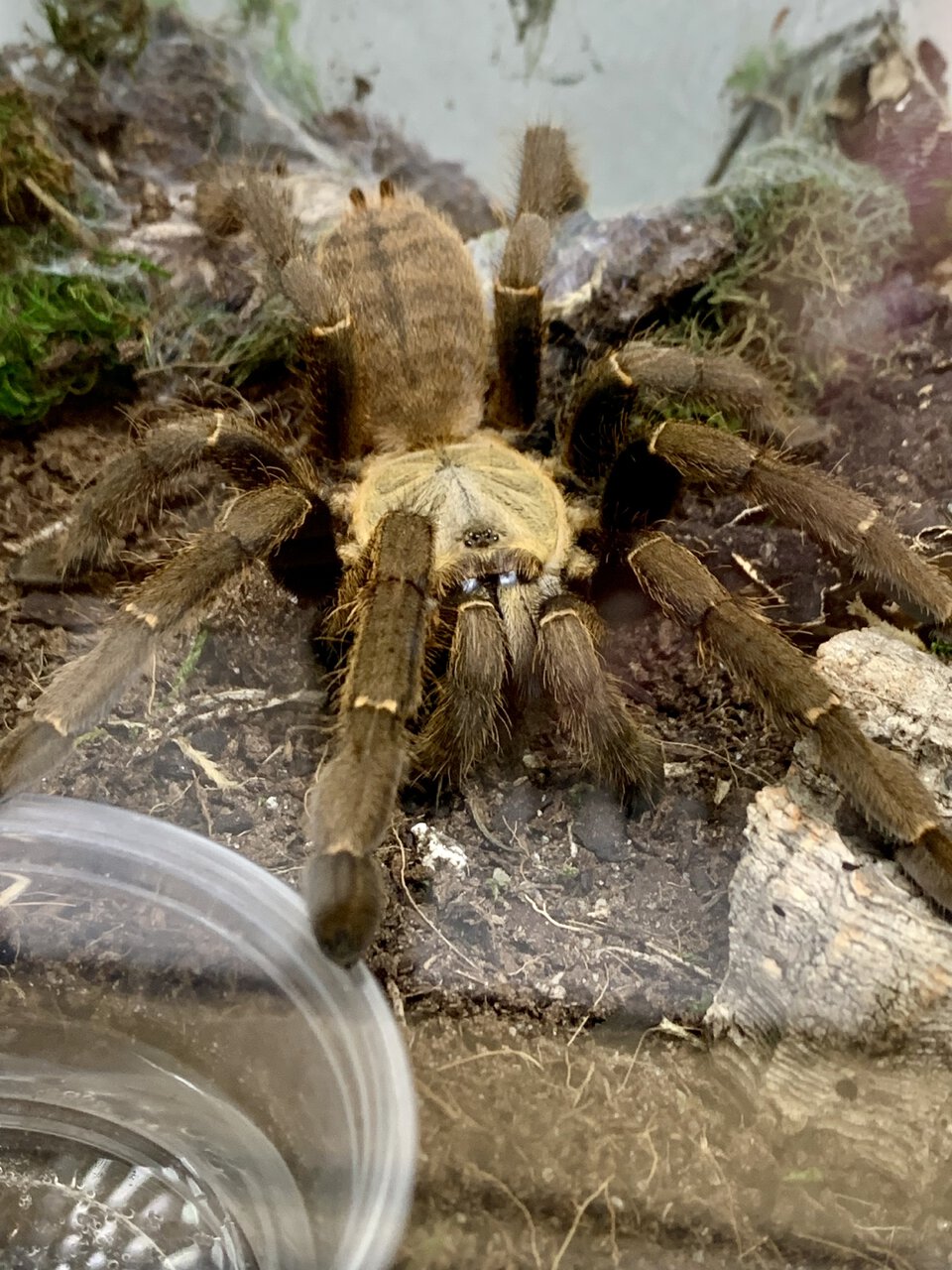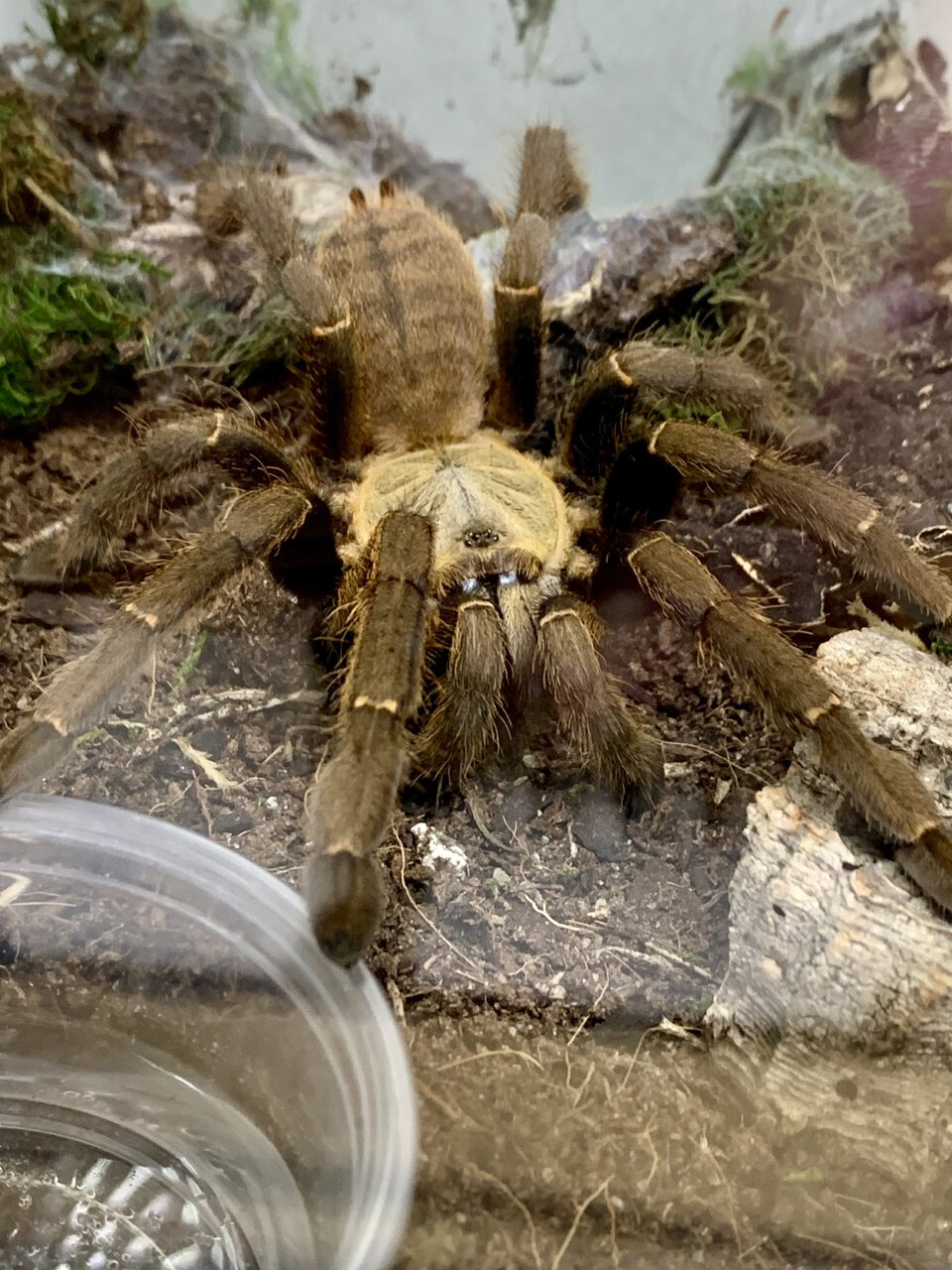Tarantuladen.co.za
Haplopelma cf. schmidti “Ke Bang”
Haplopelma cf. schmidti “Ke Bang”
Out of stock
Couldn't load pickup availability
Straight out of the dense forests of Vietnam’s Ke Bang region, this Haplopelma variant is a reclusive powerhouse. Known for its extreme fossorial behavior, pitch-dark coloration, and no-nonsense personality, it’s a prime example of what Old World keeping is all about: deep burrows, fast strikes, and a spider you respect.
Quick Facts
Common Name: Ke Bang Earth Tiger
Scientific Name: Haplopelma cf. schmidti “Ke Bang”
Origin: Ke Bang National Park, Vietnam
Size: 5.5–6.5 inches (14–16 cm) leg span
Lifespan:
- Females: 15–20 years
- Males: 3–5 years
Temperament: Ultra defensive, lightning fast, extremely reclusive
Coloration
Deep charcoal to matte black body
Subtle golden to tan leg banding in juveniles
Velvety, almost iridescent sheen post-molt
Appearance leans more "shadow assassin" than "showpiece"
Housing & Care
Enclosure Type: Deep fossorial — needs 8+ inches of substrate
Substrate: Moist, compactable mix (coco fiber, topsoil, leaf litter)
Humidity: 80–85% — must maintain deep moisture without flooding
Temperature: 75–82°F (24–28°C)
Decor:
- Deep starter burrow or cork slab
- Lots of cover — this species hates exposure
- Good ventilation essential despite high humidity
Expect it to vanish underground and create a fortified webbed burrow — sometimes for weeks at a time.
Feeding
Diet: Crickets, roaches, mealworms
Feeding Schedule:
- Slings: 2–3x/week
- Juveniles: Weekly
- Adults: Every 10–14 days
Strikes with extreme speed — will drag prey into the depths
Why It’s a Hardcore Keeper’s Favorite
Elusive and intense — the ultimate fossorial mystery
Rare regional morph with a reputation
Ideal for advanced keepers who love stealth species
Earth-shattering strike speed — serious ambush predator
No-nonsense Old World attitude in its purest form
Notes
Not a display species — stays burrowed, often unseen
Hyper-defensive if exposed — threat poses and strikes without warning
Not for handling, not for beginners
Requires high humidity + deep, stable substrate
Use caution during rehousing — they’re fast and unpredictable
Share


